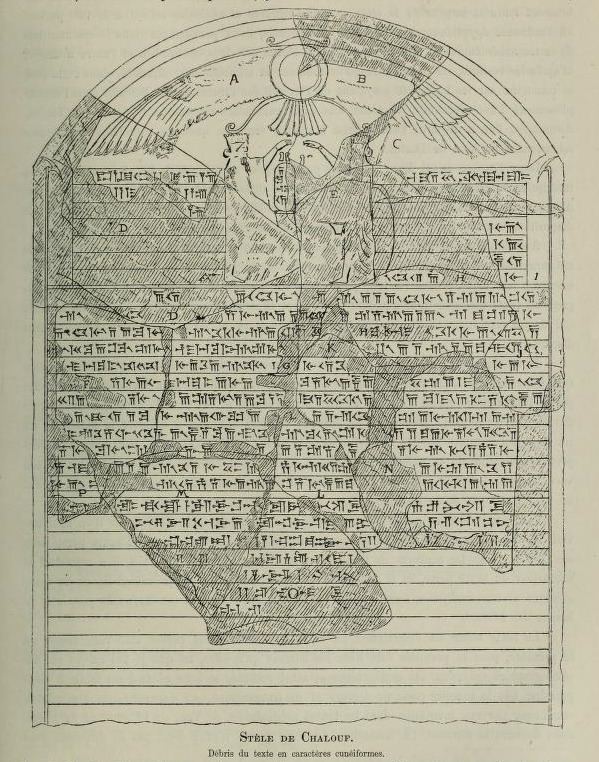 | ||
Darius the Great's Suez Inscriptions were texts written in Old Persian, Elamite, Babylonian and Egyptian on five monuments erected in Wadi Tumilat, commemorating the opening of a canal between the Nile and The Bitter Lakes.
The best preserved of these monuments was a stele of pink granite, which was discovered by Charles de Lesseps, Ferdinand de Lesseps's son, in 1866, 30 kilometers from Suez near Kabret in Egypt. It was erected by Darius the Great, king of ancient Persia, whose reign lasted from 522 BCE to 486 BCE. The monument, also known as the Chalouf stele (alt. Shaluf Stele), records the construction of a forerunner of the modern Suez Canal by the Persians, a canal through Wadi Tumilat, connecting the easternmost, Bubastite, branch of the Nile with Lake Timsah which was connected to the Red Sea by natural waterways. The stated purpose of the canal was the creation of a shipping connection between the Nile and the Red Sea, between Egypt and Persia.
Text
Partial transliteration and translation of the inscription:
xâmanišiya thâtiy Dârayavauš XŠ adam Pârsa amiy hacâ Pâ rsâ Mudrâyam agarbâyam adam niyaštâyam imâm yauviyâ m katanaiy hacâ Pirâva nâma rauta tya Mudrâyaiy danuvatiy ab iy draya tya hacâ Pârsâ aitiy pasâva iyam yauviyâ akaniya avathâ yathâ adam niyaštâyam utâ nâva âyatâ hacâ Mudrâ yâ tara imâm yauviyâm abiy Pârsam avathâ yathâ mâm kâma âha
"King Darius says: I am a Persian; setting out from Persia I conquered Egypt. I ordered to dig this canal from the river that is called Nile and flows in Egypt, to the sea that begins in Persia. Therefore, when this canal had been dug as I had ordered, ships went from Egypt through this canal to Persia, as I had intended."
